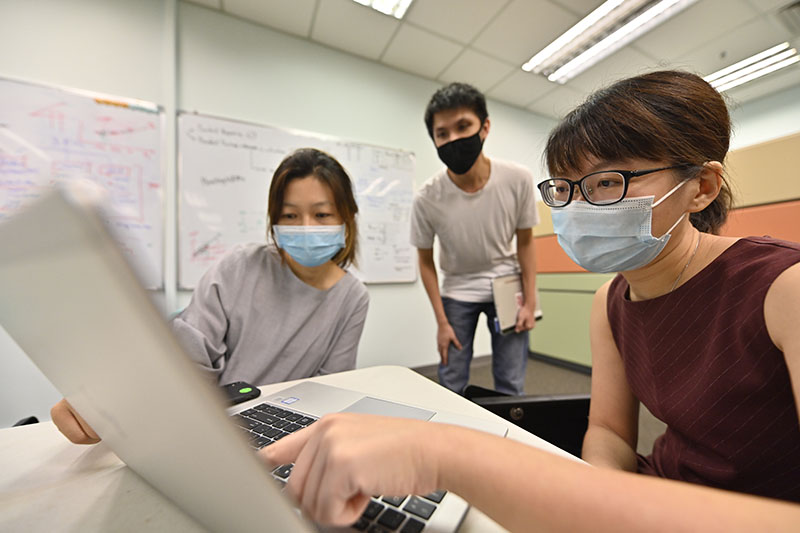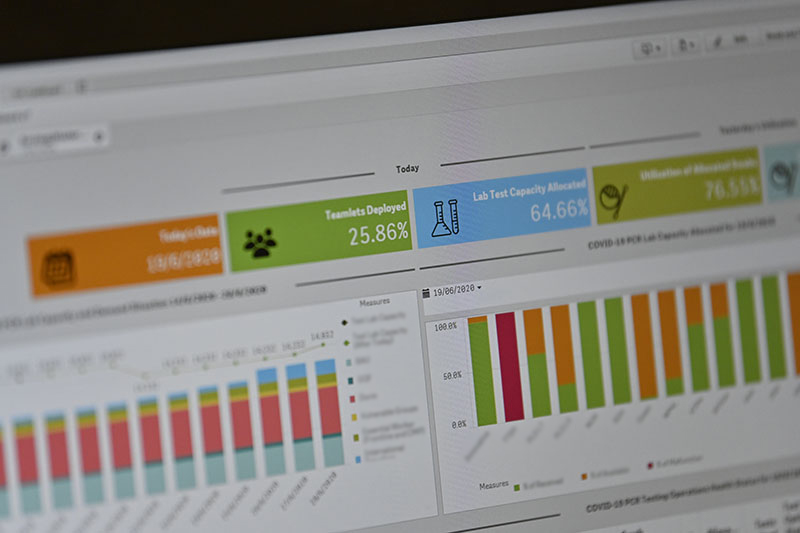Supporting National Testing Needs
Aggressive testing has been key in Singapore’s fight against COVID-19. When testing needs ramped up in May 2020, the Ministry of Health (MOH) set up the Testing Operations Centre (TOC) to aggregate national testing demands and manage the allocation of testing capacity centrally. Our team stepped in to develop a Command and Control (C2) system to enhance the TOC’s capabilities to manage large-scale operations.
Developed by our technologists in collaboration with MOH and the Health Promotion Board (HPB), the TOC C2 is an IT system that helps to manage swab testing operations nationwide. It provides operators with an overview of test demands and laboratory capacities, allowing them to better allocate resources and reduce the turnaround time to receive test results. Since its delivery, it has helped MOH scale up its testing operations tenfold in just a few months.

Rather than set up servers on the premises, the team leveraged cloud technology to speed up the TOC C2’s development. In doing so, the team was able to expedite the entire cloud infrastructure’s setup as well as its various infrastructural components such as the data warehouse, data pipelines and web servers, which were deployed in a matter of days to transmit, store and transform data to generate insights for MOH. The decision to make use of cloud infrastructure also allowed the entire TOC C2 system to be deployed within a month after its conceptualisation. Since its initial rollout, the TOC C2 system has been enhanced continuously to meet the dynamic pandemic situation.
“Using the cloud alleviated the need to buy and set up physical servers, so we were able to accelerate development greatly,” Senior Engineer (Enterprise IT) Tan Jun Rong explained.
One of the TOC C2’s key functions was the ability to track a patient’s swab status from swab registration to results. To achieve this, the team built a data analysis platform and integrated it with the existing IT systems of various health institutions, allowing the system to track and monitor the patients’ swab results.
To manage potential data quality issues, which could occur with data coming from various sources, Head Digital Transformation (HR) Tan Chay Beng, who spearheads digital transformation for MINDEF’s human resource functions, explained: “We developed a common data schema and collaborated with our partners in MOH, HPB and various other institutions on a standardisation effort.”

The team also designed the TOC C2 to be able to identify if a patient required a re-swab to verify their results. Instead of having operators sift through data manually to determine the validity of a patient’s results, the TOC C2 would aggregate data from multiple sources to track and analyse if a re-swab was required. Not only did this eliminate human error, it also shortened the turnaround time from 12 hours to just one.
“Although the project was very challenging, the opportunity to contribute to our nation’s fight against COVID-19 motivated our team to find new solutions. We’re proud to have been a part of this effort,” said Senior Engineer (Enterprise IT) Lee Ming Liang, who was also the project lead overseeing the data pipeline and its integration.
Looking back, the team felt a sense of achievement and fulfilment knowing that the capabilities that they built up over the years had paid off, allowing them to answer the nation’s call and make a difference even at such short notice.
